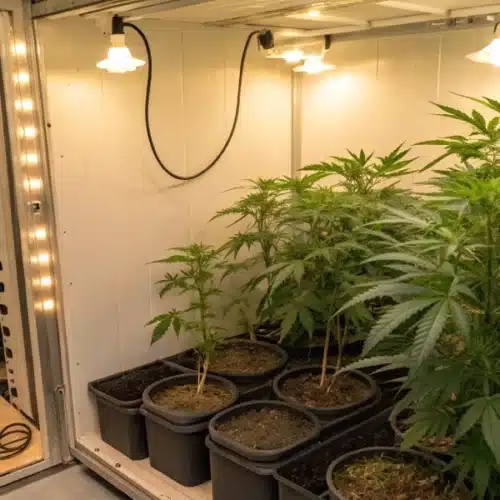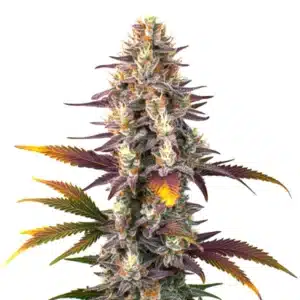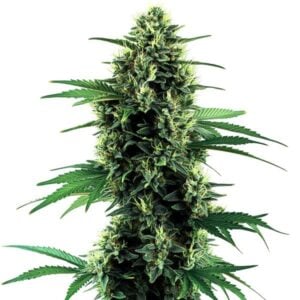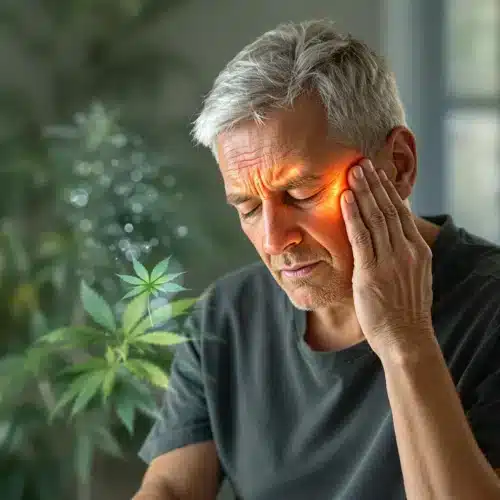Are you or a loved one struggling with the debilitating effects of muscle spasms? The quest for relief is a journey many are on, and in this extensive guide, we’ll explore the potential of marijuana as a natural remedy. From muscle spasms to the nuances of strains and consumption methods, we’ve got you covered. Let’s dive into the world of Marijuana for Muscle Spasms.
What Are Muscle Spasms?
The causes of muscle spasms can be diverse, ranging from dehydration and overexertion to underlying medical conditions such as neurological disorders or mineral deficiencies. These sudden contractions can disrupt daily activities, causing discomfort and inconvenience. This is where the potential of Marijuana For Muscle Spasms comes into play, especially when selecting the best strain for muscle relaxation to help ease tension and promote relief.
For individuals experiencing chronic or recurrent muscle spasms, seeking relief becomes a top priority. Traditional remedies like stretching, applying heat, or over-the-counter medications may provide some relief, but they often fall short of addressing the root cause. This is where the natural properties of marijuana, specifically tailored strains rich in cannabinoids, present a promising alternative for alleviating muscle spasms.
Examining the interaction between the body’s endocannabinoid system and the compounds found in marijuana is key to grasping how this natural remedy may offer relief to those suffering from persistent muscle spasms. By targeting the underlying factors contributing to muscle spasms, Marijuana For Muscle Spasms offers a holistic approach that may prove to be a game-changer for individuals seeking effective and sustainable relief.
In the following sections, we’ll delve deeper into the specifics of how marijuana interacts with the body to address muscle spasms, exploring the distinct roles of cannabinoids like THC and CBD. Through this comprehensive guide, we aim to equip you with the knowledge needed to make informed decisions regarding the use of Marijuana For Muscle Spasms.
Promos & Deals
Common Causes of Muscle Spasms
Identifying the root causes of muscle spasms is key to developing an effective approach to relief. These involuntary contractions can be triggered by a variety of factors, each deserving attention.
Dehydration and Electrolyte Imbalance: One of the most common culprits behind muscle spasms is dehydration. When the body lacks an adequate amount of fluids, it disrupts the balance of electrolytes, essential minerals like sodium, potassium, calcium, and magnesium. This imbalance can lead to misfiring signals in the nerves, resulting in sudden and often painful muscle contractions.
Overexertion and Fatigue: Pushing muscles beyond their limits, especially during intense physical activity, can lead to overexertion and subsequent spasms. This is particularly common in athletes or individuals engaged in strenuous workouts. The strained muscles are more prone to involuntary contractions, emphasizing the importance of proper rest and recovery.
Underlying Medical Conditions: Various medical conditions can predispose individuals to muscle spasms. These may include neurological disorders like multiple sclerosis, spinal cord injuries, or nerve compression syndromes. Additionally, conditions like diabetes or thyroid disorders can disrupt the body’s electrolyte balance, increasing the likelihood of spasms.
Nutritional Deficiencies: A deficiency in crucial minerals like potassium, calcium, or magnesium can lead to an increased susceptibility to muscle spasms. This is particularly relevant for individuals with restricted diets or absorption issues.
Medication Side Effects: Certain medications, including diuretics, antipsychotics, and corticosteroids, can disrupt electrolyte balance or directly affect muscle function. This can potentially lead to an increased incidence of muscle spasms.
Addressing these underlying causes is pivotal in finding effective and sustainable relief from muscle spasms. This is where the potential of Marijuana For Muscle Spasms becomes pertinent. By targeting the factors contributing to spasms, marijuana offers a natural alternative that may address the root causes. The cannabinoids present in marijuana, particularly THC and CBD, have shown promise in modulating pain perception and relaxing muscle contractions. This makes marijuana a compelling option for those seeking relief from the pervasive impact of muscle spasms.

The Impact of Muscle Spasms on Daily Life
Living with muscle spasms can be an arduous challenge, permeating various aspects of daily life. These sudden and often painful contractions can disrupt even the simplest of tasks, turning routine activities into formidable feats. Whether it’s the sharp twinge in the back during a morning stretch or the persistent cramping in the legs that strikes at night, the impact of muscle spasms is profound.
Individuals experiencing muscle spasms may find themselves limited in their mobility, often having to forego activities they once enjoyed. Simple actions like walking, lifting objects, or even sitting for extended periods can become painful ordeals. This not only hampers physical wellbeing but can also lead to feelings of frustration and helplessness.
Sleep quality can also be severely affected. Nighttime muscle spasms can jolt individuals awake, robbing them of much-needed rest. The resulting fatigue can further compound the challenges of daily life, affecting concentration, productivity, and overall mood.
This is where the potential of Marijuana For Muscle Spasms comes into play as a natural remedy. By addressing the underlying causes of muscle spasms, marijuana offers the promise of enhanced mobility and reduced discomfort. Imagine being able to engage in activities without the constant fear of spasms interrupting the flow of life. It’s this potential for a return to normalcy that makes marijuana a compelling option for those seeking relief from the pervasive impact of muscle spasms.
Muscle Spasms vs. Cramps: What’s the Difference?
Recognizing the difference between muscle spasms and cramps is key to identifying the cause of the discomfort one might be feeling. While the terms are sometimes used interchangeably, they refer to distinct physiological phenomena.
Muscle Spasms: Muscle spasms, as mentioned earlier, involve involuntary contractions of one or more muscles. They can manifest as sudden twitches or more sustained, painful contractions. These spasms are often a result of a variety of triggers, including dehydration, overexertion, or underlying medical conditions. The discomfort they cause can range from mildly annoying to severely debilitating, depending on the severity and frequency.
Cramps: Muscle cramps, on the other hand, are sudden and intense contractions of a muscle or muscle group. They can occur suddenly and without warning, leading to sharp, localized pain. Cramps are commonly associated with factors like muscle fatigue, dehydration, or mineral imbalances.
While both muscle spasms and cramps share the commonality of involving involuntary muscle contractions, their causes and characteristics differ. This differentiation is crucial in determining the most effective approach to relief.
Now, let’s explore the potential of Marijuana For Muscle Spasms in this context. Marijuana’s natural compounds, particularly cannabinoids like THC and CBD, have shown promise in addressing both muscle spasms and cramps. By interacting with the body’s endocannabinoid system, marijuana offers a potential avenue for relief from these discomforting occurrences. Additionally, the comparison between marijuana and traditional muscle relaxers is pertinent. While muscle relaxers may provide relief, they often come with a range of potential side effects. Marijuana and muscle relaxers represent two distinct approaches to managing muscle spasms and cramps, each with its own set of considerations.
Marijuana’s Role in Muscle Spasms
Marijuana For Muscle Spasms contains a wealth of compounds, the most well-known being cannabinoids. Among these, THC and CBD take center stage in the discussion of muscle spasm relief.
THC for Muscle Spasms: THC, or tetrahydrocannabinol, is perhaps the most renowned cannabinoid due to its psychoactive properties. However, its therapeutic potential goes far beyond its euphoric effects. Research suggests that THC may play a crucial role in modulating pain perception and muscle contractions. By interacting with cannabinoid receptors in the body, THC may help mitigate the intensity and frequency of muscle spasms.
CBD for Muscle Spasms: CBD, or cannabidiol, is another key cannabinoid found in marijuana. Unlike THC, CBD is non-psychoactive, making it an appealing option for those seeking relief without the associated high. Studies indicate that CBD possesses anti-inflammatory and muscle relaxant properties. This makes it a compelling candidate for addressing the underlying factors contributing to muscle spasms.
In combination, THC and CBD form a potent duo that targets the multifaceted nature of muscle spasms. While THC offers potential relief from pain and intense contractions, CBD contributes its anti-inflammatory properties, potentially reducing the triggers for muscle spasms.
Additionally, the entourage effect, a phenomenon observed when multiple cannabinoids work together synergistically, amplifies the potential benefits of using a whole-plant approach. This further underscores the importance of considering the full spectrum of cannabinoids present in Marijuana For Muscle Spasms.
As we navigate through the intricacies of marijuana’s influence on muscle spasms, we’ll delve deeper into the specific strains and consumption methods that optimize the potential benefits of both THC and CBD. Through this comprehensive guide, we aim to empower you with the knowledge needed to make informed decisions regarding the use of Marijuana For Muscle Spasms, ultimately offering a natural and potentially effective solution for those seeking relief from persistent muscle spasms.

How Marijuana Affects Muscle Spasms
Delving deeper, we’ll uncover the mechanisms through which marijuana influences the muscles, potentially offering relief from spasms.
Cannabinoids and Their Role
Central to the potential efficacy of Marijuana For Muscle Spasms are the diverse array of compounds known as cannabinoids. These compounds, found abundantly in the marijuana plant, interact with the body’s endocannabinoid system, a complex network of receptors and neurotransmitters that play a crucial role in regulating various physiological functions.
Among the multitude of cannabinoids present in marijuana, THC and CBD are of particular interest in the context of muscle spasms. These two compounds have distinct mechanisms of action, offering a multi-faceted approach to addressing the underlying causes of muscle spasms.
THC (Tetrahydrocannabinol): THC, the primary psychoactive cannabinoid, is renowned for its ability to induce a sense of euphoria or “high.” Beyond its psychoactive effects, THC has demonstrated potential as a muscle relaxant and pain reliever. By binding to cannabinoid receptors in the body, THC may help modulate pain perception and reduce the intensity of muscle contractions. This makes it a pivotal component of Marijuana For Muscle Spasms.
CBD (Cannabidiol): Unlike THC, CBD is non-psychoactive, meaning it does not produce the characteristic high associated with marijuana use. Instead, CBD is celebrated for its anti-inflammatory and analgesic properties. These attributes make it a compelling candidate for addressing the inflammation and muscle tension that contribute to muscle spasms. When combined with THC, CBD enhances the potential therapeutic benefits, creating a synergistic effect known as the entourage effect.
The entourage effect is a phenomenon where various cannabinoids and other compounds in marijuana work together to amplify their individual effects. This emphasizes the importance of considering the full spectrum of cannabinoids present in Marijuana For Muscle Spasms.
By leveraging the unique properties of THC and CBD, individuals seeking relief from muscle spasms can potentially benefit from the diverse therapeutic potential offered by cannabinoids. Knowing how these compounds contribute to muscle spasm relief is essential for making well-informed decisions about the most effective treatment options. In the subsequent sections, we’ll delve further into the strains and consumption methods that optimize the potential benefits of both THC and CBD. Through this comprehensive guide, we aim to empower you with the knowledge needed to make informed decisions regarding the use of Marijuana For Muscle Spasms, potentially offering a natural and effective solution for those dealing with persistent muscle spasms.
Strains for Muscle Spasms Relief
Not all strains are created equal when it comes to muscle spasms. We’ll guide you through the considerations in choosing the right strain for your specific needs.
Indica vs. Sativa: Which Is Better for Muscle Spasms?
When it comes to choosing the right strain of marijuana to address muscle spasms, the age-old debate between Indica and Sativa takes center stage. Each strain type offers distinct profiles of cannabinoids, terpenes, and effects, making them suitable for different purposes. Let’s explore how both can potentially benefit those seeking relief from persistent muscle spasms.
Indica Strains for Muscle Spasms: Indica strains are renowned for their relaxing and sedative properties. They are typically rich in CBD, making them a popular choice for those seeking relief from muscle spasms. Varieties like “Purple Kush” and “Granddaddy Purple” are well-regarded for their potential to induce deep relaxation and alleviate muscle tension. The high CBD content in Indica strains complements the natural muscle relaxant properties, potentially providing a powerful antidote to spasms.
- Purple Kush: Purple Kush is a quintessential Indica strain known for its deep relaxation properties. Its dense, vibrant purple buds are visually striking. The aroma is a blend of earthiness and sweet grape, providing a pleasant sensory experience. This strain is often sought after for its potential to induce a calming, sedative effect, making it an excellent choice for those seeking relief from muscle spasms and tension.
- Granddaddy Purple: Granddaddy Purple, often abbreviated as GDP, is a well-loved Indica strain. It boasts stunning deep purple hues and emits a sweet, berry-like fragrance. This strain is known for its potent relaxation properties, making it a go-to choice for those looking to unwind and alleviate muscle tension. Granddaddy Purple’s high CBD content adds an extra layer of potential relief for muscle spasms.
Sativa Strains for Muscle Spasms: Sativa strains, on the other hand, are known for their energizing and uplifting effects. While they are not typically the first choice for muscle spasm relief, certain Sativa strains with balanced THC-to-CBD ratios can offer benefits. Varieties like “Harlequin” and “Sour Diesel” provide a gentle combination of mental alertness and muscle relaxation. This can be particularly advantageous for individuals seeking relief without experiencing excessive sedation.
- Harlequin: Harlequin is a unique Sativa-dominant strain known for its balanced CBD-to-THC ratio. Its bright green buds and distinctive musky scent make it easily recognizable. Harlequin provides a clear-headed, energizing effect, making it an attractive option for daytime use. For individuals seeking relief from muscle spasms without experiencing excessive sedation, Harlequin offers a favorable balance between mental alertness and physical relaxation.
- Sour Diesel: Sour Diesel is a legendary Sativa strain known for its invigorating effects. Its pungent, diesel-like aroma is unmistakable. This strain delivers a potent cerebral high, promoting creativity and focus. While not traditionally associated with muscle relaxation, certain variations of Sour Diesel with balanced THC-to-CBD ratios can offer a mild degree of relief from muscle spasms while keeping the mind sharp and engaged.
Choosing between Indica and Sativa ultimately depends on individual preferences and specific symptoms. For those prioritizing deep relaxation and relief from muscle spasms, Indica strains are likely the better choice. However, individuals who require daytime relief while maintaining mental clarity may find certain Sativa strains to be a suitable option.
In the context of Marijuana For Muscle Spasms, a balanced approach incorporating both Indica and Sativa strains may be beneficial. This allows individuals to tailor their treatment to their unique needs, potentially maximizing the benefits of each strain type.
High-CBD Strains: A Ray of Hope
n the realm of Marijuana For Muscle Spasms, high-CBD strains emerge as a beacon of potential relief. CBD, or cannabidiol, is a non-psychoactive cannabinoid celebrated for its therapeutic properties. When it comes to muscle spasms and cramps, high-CBD strains offer a promising avenue for those seeking natural remedies.
CBD for Muscle Spasms and Cramps:
Studies have shown that CBD possesses potent anti-inflammatory and muscle relaxant properties. This makes it an attractive option for individuals grappling with the discomfort of muscle spasms and cramps. By targeting the underlying causes of these involuntary contractions, CBD may offer significant relief.
Here are some noteworthy high-CBD strains renowned for their potential in addressing muscle spasms:
Charlotte’s Web: Named after Charlotte Figi, a young girl who experienced remarkable improvements with this strain, Charlotte’s Web is celebrated for its high CBD content and low THC levels. It’s been a game-changer for many seeking relief from various conditions, including muscle spasms.
Harlequin: This sativa-dominant strain boasts a balanced CBD-to-THC ratio, making it an excellent choice for individuals seeking relief without the psychoactive effects. Harlequin’s high CBD content provides potential anti-inflammatory benefits, which may be particularly beneficial for muscle spasms.
ACDC: Another high-CBD strain, ACDC, is lauded for its impressive CBD-to-THC ratio, often ranging from 20:1 or higher. This means minimal psychoactive effects while offering substantial therapeutic potential. It’s gained popularity for its potential in managing a variety of conditions, including muscle spasms.
Cannatonic: This hybrid strain is a balanced mix of CBD and THC, providing a milder euphoria while still delivering the potential benefits of CBD. Cannatonic is often sought after for its potential to alleviate pain and muscle tension, making it a viable option for those with muscle spasms.
These high-CBD strains represent a ray of hope for individuals struggling with muscle spasms. Their unique cannabinoid profiles offer potential relief without the intense psychoactive effects associated with high-THC strains. As we move forward in this guide, we’ll explore further nuances, including considerations between high-CBD and high-THC strains, to empower you with the knowledge needed to make informed decisions regarding the use of Marijuana For Muscle Spasms.
High CBD vs. High THC Strains
In the realm of Marijuana For Muscle Spasms, the choice between high-CBD and high-THC strains is pivotal.
High-CBD Strains: These strains, rich in cannabidiol, offer potential therapeutic benefits without the pronounced psychoactive effects of THC. They target inflammation and muscle tension, potentially providing relief without inducing a high.
High-THC Strains: These strains contain elevated levels of tetrahydrocannabinol, offering benefits like pain relief and muscle relaxation. However, they can also induce intoxicating effects, which may not be suitable for everyone.
Ultimately, the decision depends on individual preferences and sensitivities. For those prioritizing relief from muscle spasms while minimizing psychoactive effects, high-CBD strains are often the preferred option. They offer a gentle and targeted approach to addressing the underlying causes of spasms, potentially leading to an improved quality of life.
Finding the Perfect Strain for Your Needs
Selecting the right strain from the vast array available in the world of Marijuana For Muscle Spasms is a crucial step towards finding effective relief. Each strain possesses a unique combination of cannabinoids, terpenes, and other compounds, which contribute to its specific effects and potential benefits.
Consider the following factors when searching for the perfect strain to address muscle spasms:
Cannabinoid Profile: The cannabinoid content is paramount. As discussed earlier, strains high in CBD may be particularly effective in alleviating muscle spasms. However, some individuals may find a balanced THC-to-CBD ratio more beneficial, especially if they require some degree of pain relief along with muscle relaxation.
Terpene Content: spray Terpenes are aromatic compounds found in marijuana that not only influence its flavor and scent but also contribute to its therapeutic effects. For muscle spasms, strains rich in myrcene, limonene, and pinene may offer additional anti-inflammatory and muscle relaxant properties.
THC Levels: Consider your tolerance to THC. High-THC strains may provide more intense relief, but they may also come with psychoactive effects. If you’re seeking a more functional option, strains with lower THC content or balanced ratios may be more suitable.
Strain Type: Indica-dominant strains are generally associated with relaxation and sedation, making them potentially effective for muscle spasms. Sativa-dominant strains, on the other hand, may offer more uplifting effects, which could be beneficial for daytime use.
Personal Preferences: Your individual preferences and experiences play a crucial role. Some individuals may find certain strains more effective or enjoyable based on their unique physiology and sensitivities.
It’s worth noting that experimentation may be necessary to find the strain that best suits your specific needs. Keep track of your experiences with different strains to identify patterns and preferences.
Additionally, consulting with a knowledgeable budtender or healthcare professional can provide invaluable insights and recommendations based on your individual circumstances. They can help guide you towards strains with profiles that align with your desired effects and relief goals.
Ultimately, finding the perfect strain for your needs is a personalized journey. Armed with the knowledge of strain types, cannabinoid profiles, and terpene content, you’re well-equipped to make informed decisions regarding the use of Marijuana For Muscle Spasms.

The Benefits of Using Marijuana for Muscle Spasms
The advantages of utilizing marijuana for muscle spasms extend beyond mere relief. We’ll highlight the holistic benefits, including pain relief, muscle relaxation, and stress management.
Pain Relief and Muscle Relaxation
Marijuana’s potential to alleviate pain and induce muscle relaxation is a game-changer for those battling spasms. We’ll explore the science behind it.
Managing Anxiety and Stress
In addition to physical relief, marijuana may provide solace for the mind. We’ll discuss its potential in managing anxiety and stress associated with muscle spasms.
Potential Risks and Side Effects
A balanced perspective is crucial. We’ll address potential risks and side effects associated with using marijuana for muscle spasms, ensuring an informed decision-making process.
FAQs
How can marijuana help with muscle spasms?
Marijuana may help with muscle spasms by interacting with the body’s endocannabinoid system. Cannabinoids like THC and CBD can reduce inflammation, relax muscles, and modulate pain perception. Many users report that certain marijuana strains provide relief from the intensity and frequency of spasms, improving mobility and overall quality of life.
What are the best strains of marijuana for muscle spasms?
The best strains for muscle spasms often include high-CBD strains such as Charlotte’s Web, Harlequin, ACDC, and balanced hybrids like Cannatonic. Indica strains like Purple Kush and Granddaddy Purple are also popular for their relaxing effects. The choice between high-CBD or high-THC strains depends on individual needs—some may prefer non-psychoactive relief, while others benefit from the muscle relaxant properties of THC.
Are there any risks or side effects of using marijuana for muscle spasms?
While marijuana can provide relief for muscle spasms, potential side effects may include drowsiness, dry mouth, dizziness, or mild cognitive effects—especially with high-THC strains. It’s important to start with low doses, monitor your body’s response, and consult with a healthcare professional if you’re new to cannabis use or managing other medical conditions.
















